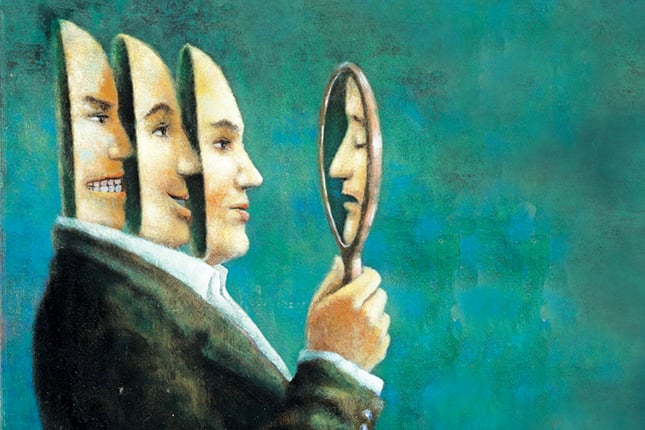Narcissism is a complex personality trait that manifests in different forms. While most people associate narcissism with arrogance and self-centeredness, it can actually appear in various ways. Dr. Ramani Durvasula, a well-known psychologist and expert on narcissistic behavior, recently explained the six different types of narcissists and how to identify each one. This article will break down each type, helping you better understand the distinctions and recognize the behaviors associated with them.
What is Narcissism? A Quick Overview

Narcissism, in its simplest form, refers to a pattern of self-importance, entitlement, and a need for excessive admiration. However, not all narcissists behave in the same way. Dr. Durvasula categorizes narcissists into six distinct types, each with its own characteristics and underlying motivations. Understanding these differences can help you navigate relationships with narcissistic individuals more effectively.
1. The Grandiose Narcissist: The Classic Type
Grandiose narcissists are the stereotypical “look-at-me” personalities that most people associate with narcissism. These individuals are characterized by their need for constant attention, admiration, and validation.
- Traits: They are confident, charismatic, and often dominate social situations. Think of the flashy CEO, the attention-seeking celebrity, or the loud party host—these are all typical examples of grandiose narcissists.
- Behaviors: They tend to be arrogant, boastful, and often dismissive of others. They enjoy being the center of attention and expect others to cater to their needs.
- Red Flags: If someone constantly seeks validation, dominates conversations, or has a preening, self-absorbed demeanor, they may be a grandiose narcissist.
Dr. Durvasula describes them as the “fun” narcissist who thrives on external recognition and can sometimes be charming. However, their need for admiration can make them exploitative, and they may use others as stepping stones to achieve their goals.
2. The Vulnerable Narcissist: The ‘Poor Me’ Type
Unlike the grandiose type, vulnerable narcissists display their narcissism through self-pity and victimhood. They are often insecure, hypersensitive to criticism, and easily offended.
- Traits: They exhibit a constant sense of being wronged or overlooked, often appearing sullen or resentful. These individuals tend to externalize their failures, blaming others for their shortcomings.
- Behaviors: Vulnerable narcissists often act passive-aggressively and expect others to save or support them. They may frequently complain about how “life is unfair” and how no one appreciates their true potential.
- Red Flags: A tendency to make excuses, hold grudges, and display a “woe-is-me” attitude can indicate a vulnerable narcissist.
While grandiose narcissists get things done, vulnerable narcissists often struggle to launch their careers or life goals, constantly pointing fingers at circumstances or others. They may seem harmless at first but can turn vindictive when their expectations aren’t met.
3. The Communal Narcissist: The ‘Do-Gooder’ Type
Communal narcissists seek validation through public displays of generosity and altruism. They aim to be seen as the “good person,” constantly working to create an image of benevolence.
.jpg)
- Traits: They are often involved in charities, social justice causes, or community service—but their main motivation is to be praised for their efforts, not necessarily to help others.
- Behaviors: These narcissists seek admiration for their good deeds and often expect recognition in return. They rarely act anonymously and become angry or resentful if their efforts go unnoticed.
- Red Flags: If someone’s kindness comes with strings attached or they become resentful when not publicly acknowledged, they might be a communal narcissist.
Dr. Durvasula explains that communal narcissists are not driven by genuine compassion but by a need to be seen as morally superior. They can even escalate to cult-like leadership if they amass enough followers who praise their perceived “greatness.”
4. The Self-Righteous Narcissist: The Moral Judge
Self-righteous narcissists are obsessed with maintaining a moral high ground. They judge others harshly and often try to impose their rigid standards on those around them.
- Traits: They tend to be hypercritical, judgmental, and inflexible. They often present themselves as the ethical authority in a situation, and failure to meet their standards is seen as a personal affront.
- Behaviors: These narcissists shame others for failing to meet their moral expectations and often act cold or detached to emphasize their sense of superiority.
- Red Flags: An obsessive need for rules, a holier-than-thou attitude, and a tendency to blame others for their failures are signs of a self-righteous narcissist.
Dr. Durvasula notes that this type of narcissist rarely identifies as narcissistic. Instead, they believe they are justified in their rigid moral judgments, often shaming those who don’t meet their standards.
5. The Neglectful Narcissist: The Indifferent User

Neglectful narcissists view people as tools to fulfill their own needs. They lack genuine interest in others’ feelings, often treating relationships as purely transactional.
- Traits: They are detached, indifferent, and lack empathy. Neglectful narcissists are primarily concerned with how others can serve their personal agendas.
- Behaviors: Their interactions are often hollow and unfulfilling. They struggle to maintain meaningful relationships, as they see others as objects or resources rather than people.
- Red Flags: If someone consistently uses others without offering genuine connection or care, they may be a neglectful narcissist.
Dr. Durvasula likens this type of narcissist to someone who views people like appliances—functional but devoid of emotional value. Relationships with neglectful narcissists often feel empty and unsatisfying.
6. The Malignant Narcissist: The Dangerous Manipulator
Malignant narcissists represent the most extreme and dangerous form of narcissism. They exhibit traits of manipulation, control, and even sadism.
- Traits: They combine the typical characteristics of narcissism with more severe behaviors, such as intimidation, coercion, and cruelty.
- Behaviors: Malignant narcissists frequently exploit others for personal gain, often engaging in deceitful tactics. They isolate, gaslight, and use others without remorse.
- Red Flags: If someone exhibits extreme manipulation, a tendency to gaslight, and a total disregard for others’ well-being, they may be a malignant narcissist.

According to Dr. Durvasula, malignant narcissism is the final stop before psychopathy. It involves severe antisocial behavior and a lack of empathy that can be highly destructive.
Conclusion: Understanding the Different Types of Narcissists
Narcissism can take many forms, and understanding its different manifestations is crucial for recognizing and managing these behaviors in relationships. Whether it’s the charming grandiose type, the manipulative malignant type, or the seemingly benevolent communal type, each version of narcissism has its unique characteristics and red flags. Recognizing these differences can empower you to set healthier boundaries, protect yourself, and navigate relationships with more awareness.
Remember, while some forms of narcissism are more dangerous than others, all types can be challenging to deal with. By identifying these patterns, you can make more informed decisions about how to interact with the narcissists in your life.


